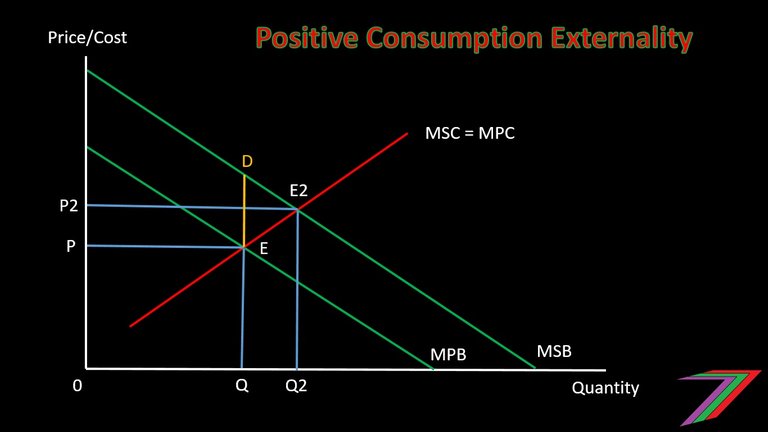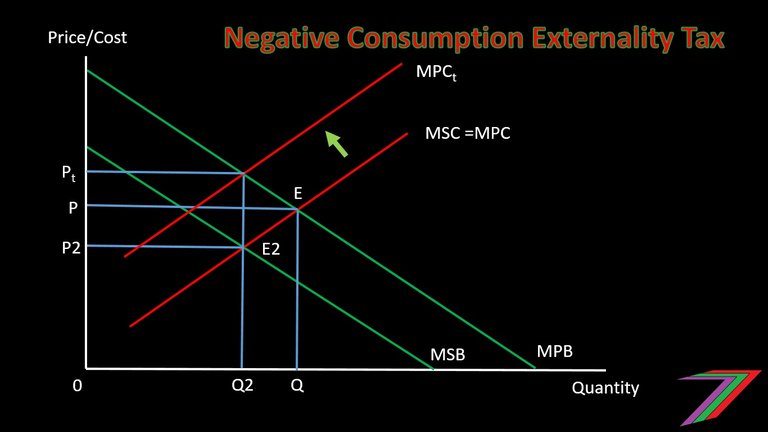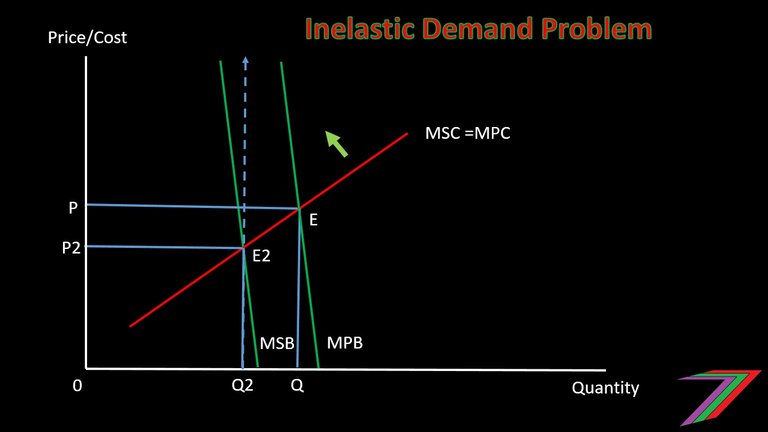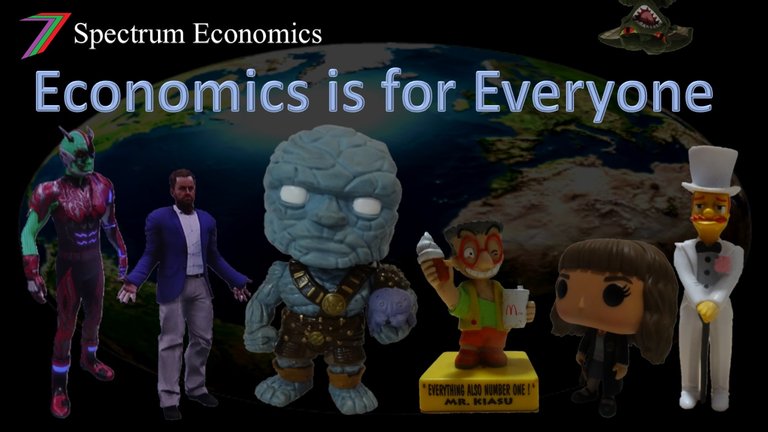Externalities Explained (Video)
Hi Everyone,
This post contains a video which is a follow up to my written post Economic Concepts #11 - Externalities. I recommend that you read this post as well as watching the video. The written post lists examples of externalities, which are not covered in the video. Whereas the video, explains fewer examples but in more detail.
YouTube Version
Just in case, the 3Speak version becomes unavailable at some point. I have also uploaded the video to YouTube.
Definition of Externality
An externality is an economic term referring to a cost or benefit incurred or received by a third party. However, the third party has no control over the creation of that cost or benefit.
Source: Investopedia
Summary of video
This video explores both positive and negative externalities. The video looks at why goods that produce negative externalities are typically overproduced while goods that produce positive externalities are typically underproduced. The video also considers how negative externalities can be reduced and how positive externalities can be increased through various methods.

Externalities can be caused by both consumption and production. Negative externalities caused by production occur when costs of production are passed onto third parties. For example, a factory might pump dirty water into a river. The factory does not pay for the water pollution; instead, those using the water downstream pay or suffer the cost of the pollution. This could affect households, factories, and wildlife. Negative externalities caused by consumption occurs when consumption imposes a cost on those not directly consuming the good or service. For example, people at a party might be making a lot of noise and having fun. Other people living in the neighbourhood might prefer piece and quite. The noise from the party is a social cost to the neighbours. This cost tends to be higher at night.

The video considers the treatment of externalities. Can the market solve the problem of externalities or is Government intervention required? The video explains Coase Theorem. Coase Theorem is one of the most well-known explanations of how the market can possibly resolve the problem of externalities. However, for this solution to work, requires negotiation and agreement between all parties involved as well as sufficiently low transaction costs that do not offset the gain in capturing the value of the externality.

Another approach explained in the video is intervention by Government. This would involve taxing goods that produce negative externalities and subsidizing goods that produce positive negative externalities. A problem with all intervention methods is that many externalities cannot always be accurately captured or measured.

The video explains the impact of externalities through simple demand and supply graphs. These graphs are also available in the written post Economic Concepts #11 - Externalities. The video includes additional graphs explaining how, theoretically, intervention can result in optimal levels of production and consumption. The video also demonstrates graphically that intervention is likely to be ineffective if demand is inelastic.
More posts

If you want to read any of my other posts, you can click on the links below. These links will lead you to posts containing my collection of works. These posts will be updated frequently.
New Economics Udemy Course

I have launched my first Udemy course ‘Economics is for Everyone’. The course focuses on how economics affects everyday people, the decisions they make and how they interact with the world around them. The course contains 24 video lectures (about 4 hours of viewing), 64 multiple-choice questions (3 at the end of most lectures), 32 downloadable resources (presentation slides, additional notes and links to relevant Steem posts), and 2 scenario questions. The course is currently free-of-charge. Click the link above to access the course.




Steem - The Future of DApps

▶️ 3Speak



“Models and theoretical instruments of spatial statistics and spatial data analysis to analyse various economic effects such as externalities, interactions, spatial concentration and many others”
(Pucha que suena linda la wea oh) 😎
Posted using Partiko Android
What concerns me is that the effect of negative externalities are not always immediately observed or confined to particular areas. Then comes the problem of pricing the externality. Do we price the costs of intervention? Do we price the cost of the damage? Then comes the implementation and payments to those affected. It is not easy problem solve.
Posted using Partiko Android
Thanks for explaining negative externalities , truth is negative externalities is experienced in our modern world I look at your methods in order to forestall reduction and I'm asking what if by not even consuming a product but one suffers the consequences like the Hazard that comes with it what if the people that directly cause the negative externalities decides to pay damages, can we directly says it might bring a stop to it?
A big problem with negative externalities is that it is difficult to hold people fully accountable. Take pollution for example. It can spread very far and affect so many. It can take years to fully assess the damage.
People need to take action themselves by choosing to support products that don't pollute the planet. This can be achieved through greater awareness and education. The Government can also help by subsidising these so that they can become more competitive.
Posted using Partiko Android
Wow, thanks a million I was exactly guessing so too, quality contribution really. This is amazing.
Hi, @spectrumecons!
You just got a 1.2% upvote from SteemPlus!
To get higher upvotes, earn more SteemPlus Points (SPP). On your Steemit wallet, check your SPP balance and click on "How to earn SPP?" to find out all the ways to earn.
If you're not using SteemPlus yet, please check our last posts in here to see the many ways in which SteemPlus can improve your Steem experience on Steemit and Busy.
Hi @spectrumecons!
Your post was upvoted by @steem-ua, new Steem dApp, using UserAuthority for algorithmic post curation!
Your UA account score is currently 4.804 which ranks you at #1453 across all Steem accounts.
Your rank has not changed in the last three days.
In our last Algorithmic Curation Round, consisting of 110 contributions, your post is ranked at #34.
Evaluation of your UA score:
Feel free to join our @steem-ua Discord server
This post has been voted on by the SteemSTEM curation team and voting trail. It is elligible for support from @curie and @minnowbooster.
If you appreciate the work we are doing, then consider supporting our witness @stem.witness. Additional witness support to the curie witness would be appreciated as well.
For additional information please join us on the SteemSTEM discord and to get to know the rest of the community!
Please consider using the steemstem.io app and/or including @steemstem in the list of beneficiaries of this post. This could yield a stronger support from SteemSTEM.
I love it when viscerally sensed truths are offered in a way that invites logical, systematic thinking. I only watched half your video (other half for bedtime, on my iPad) when I thought: how relevant this approach would be to just about every political argument. Politics is really about competing interests in the actual world trying to work out solutions everyone can live with. If true externalities, both positive and negative, were acknowledged, political arguments (discussions) would be more productive. There would be a fair balance of interests...who gets hurt, who is harmed.
Of course, this is not what happens.
When I stopped watching the video, I was thinking of a blog @mobbs wrote about pork consumption in China. About hogs and pig farms. If you read his blog, you'll see why it came to mind in relation to negative externality.
A very informative post. Thank you!